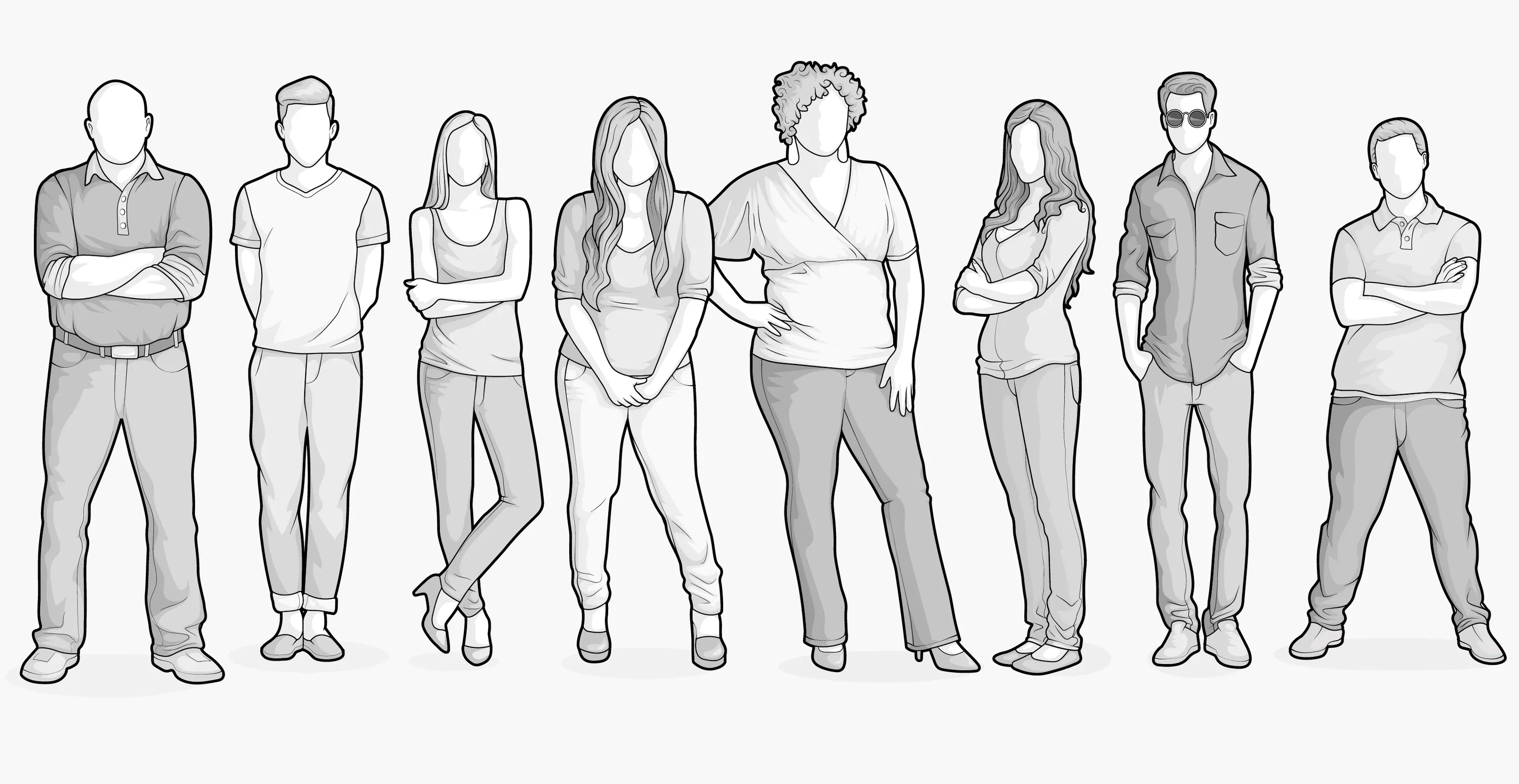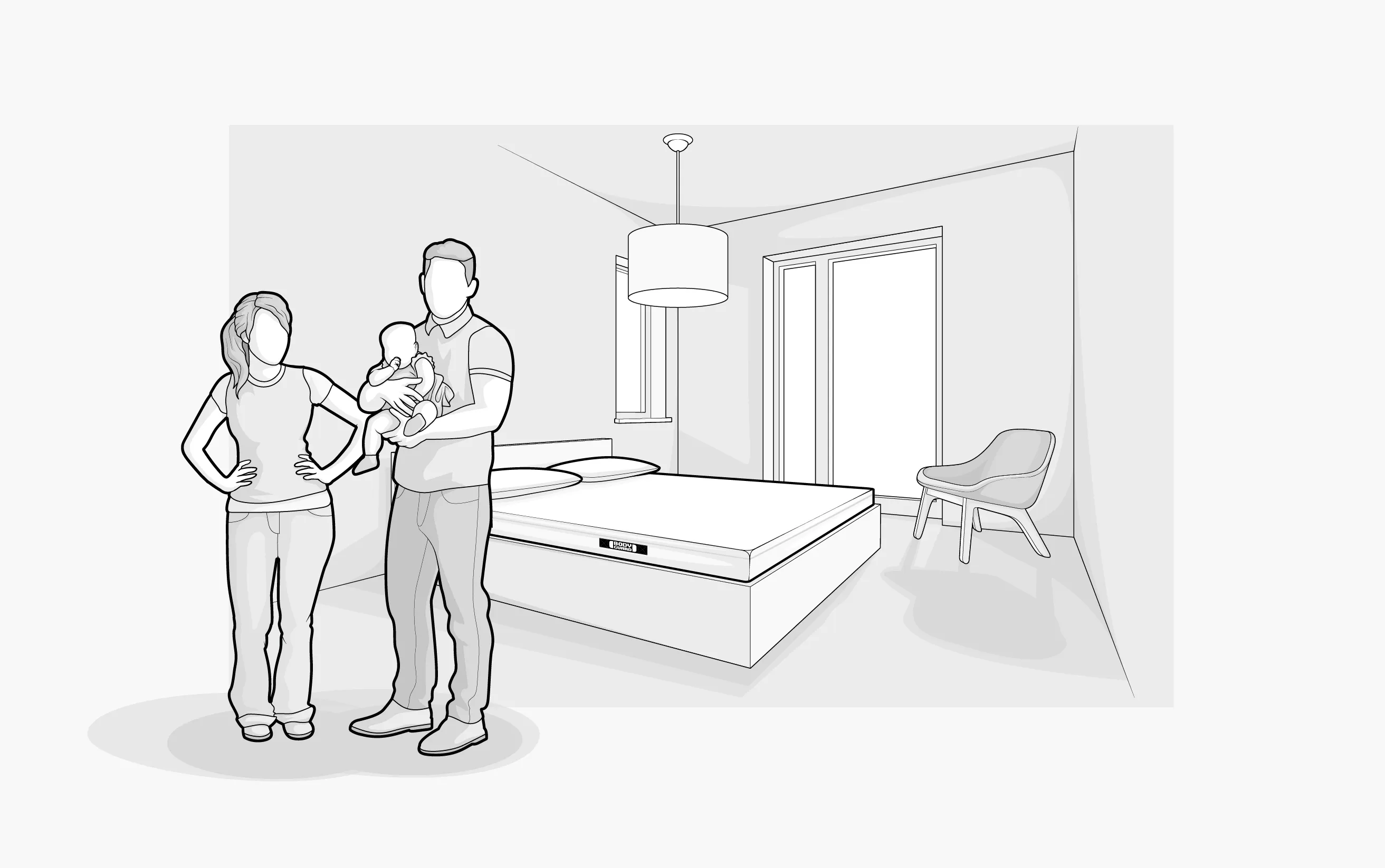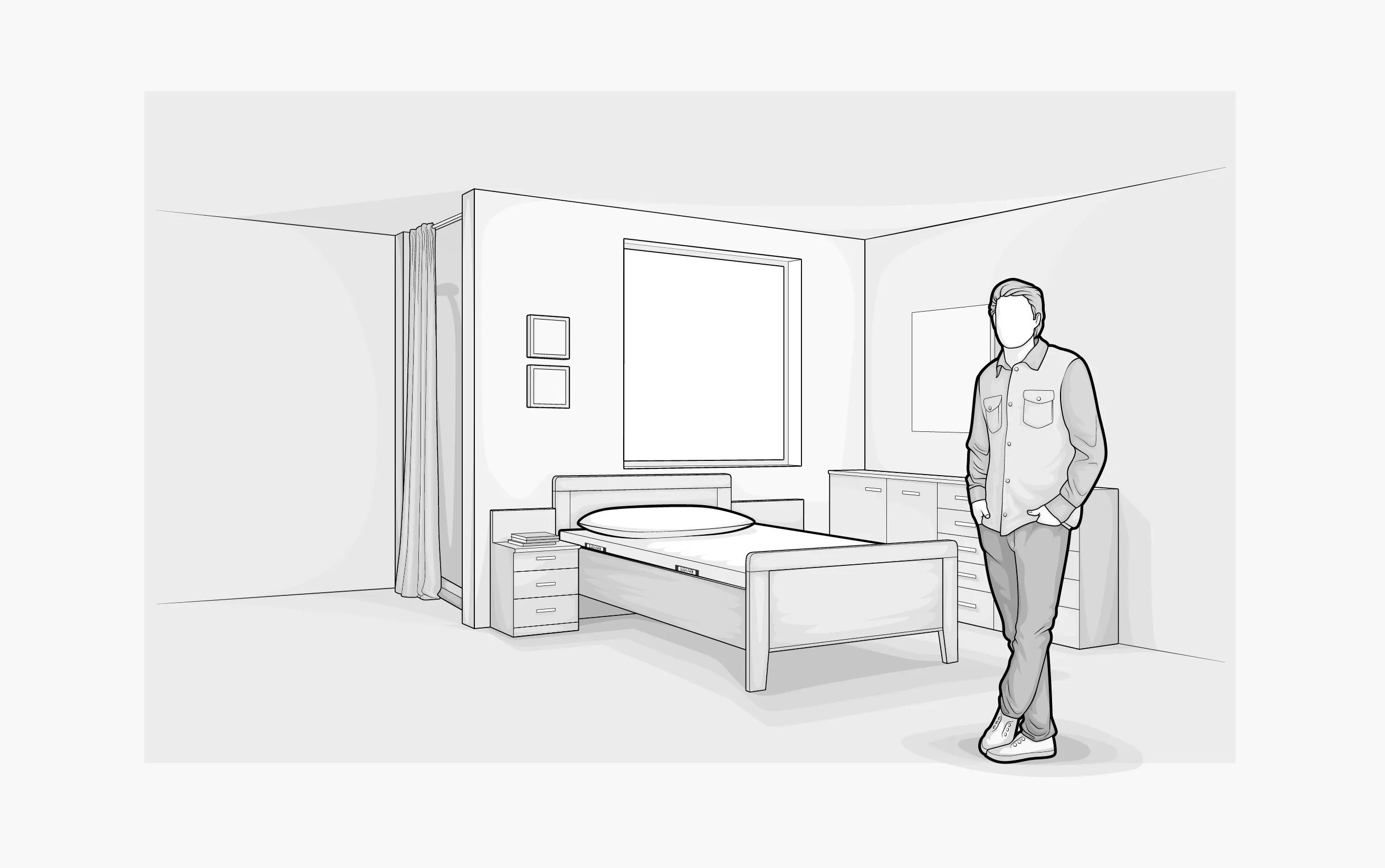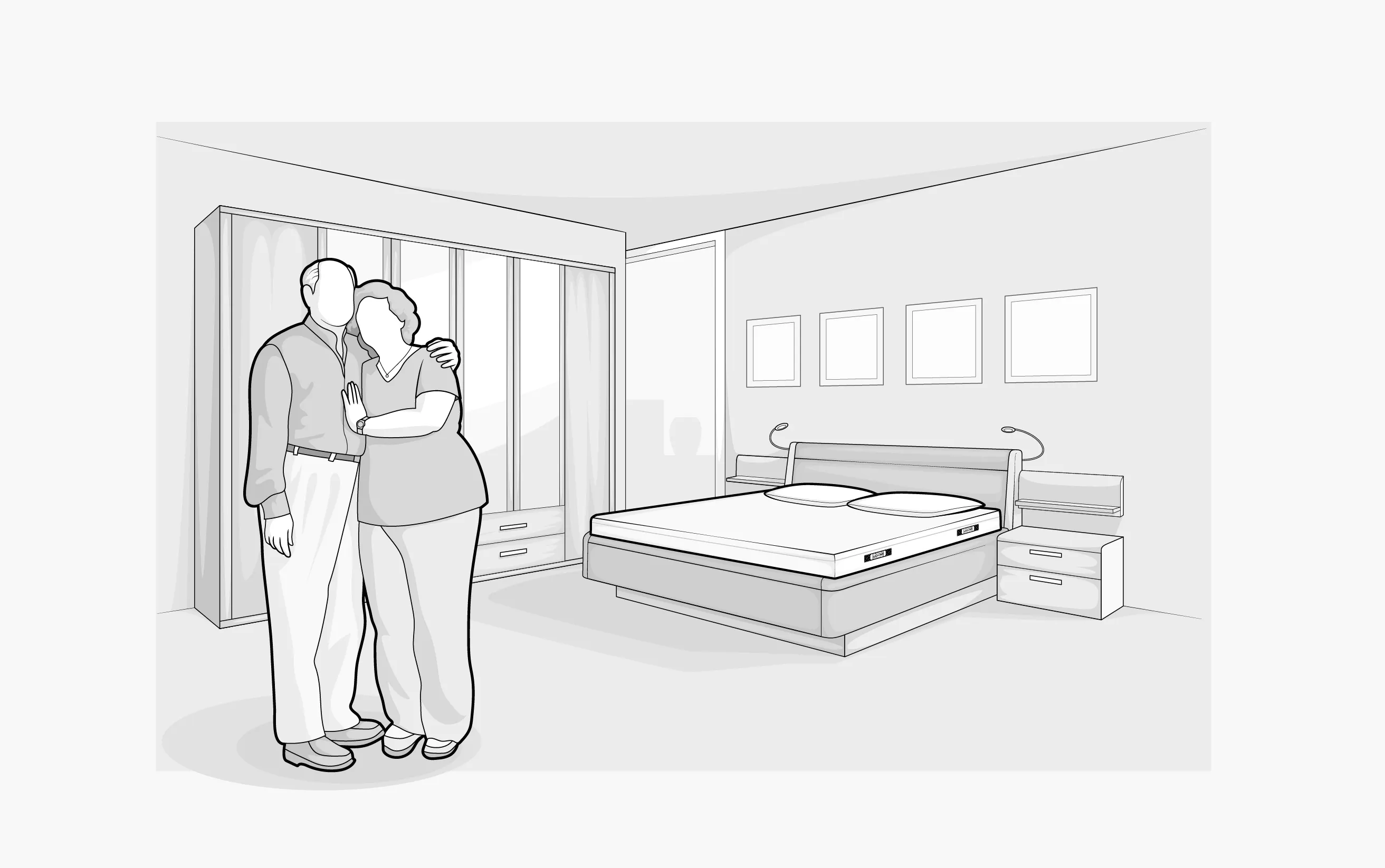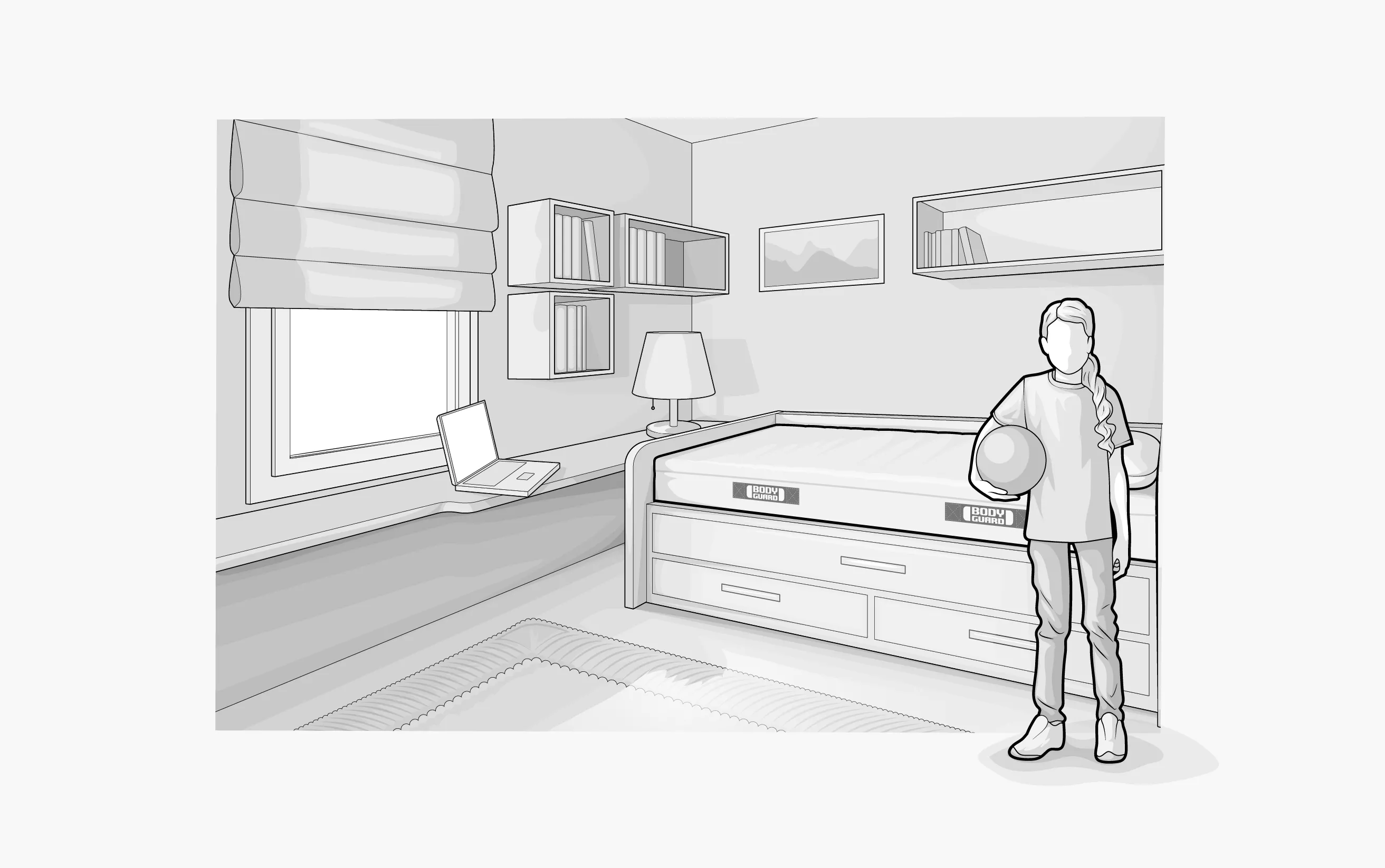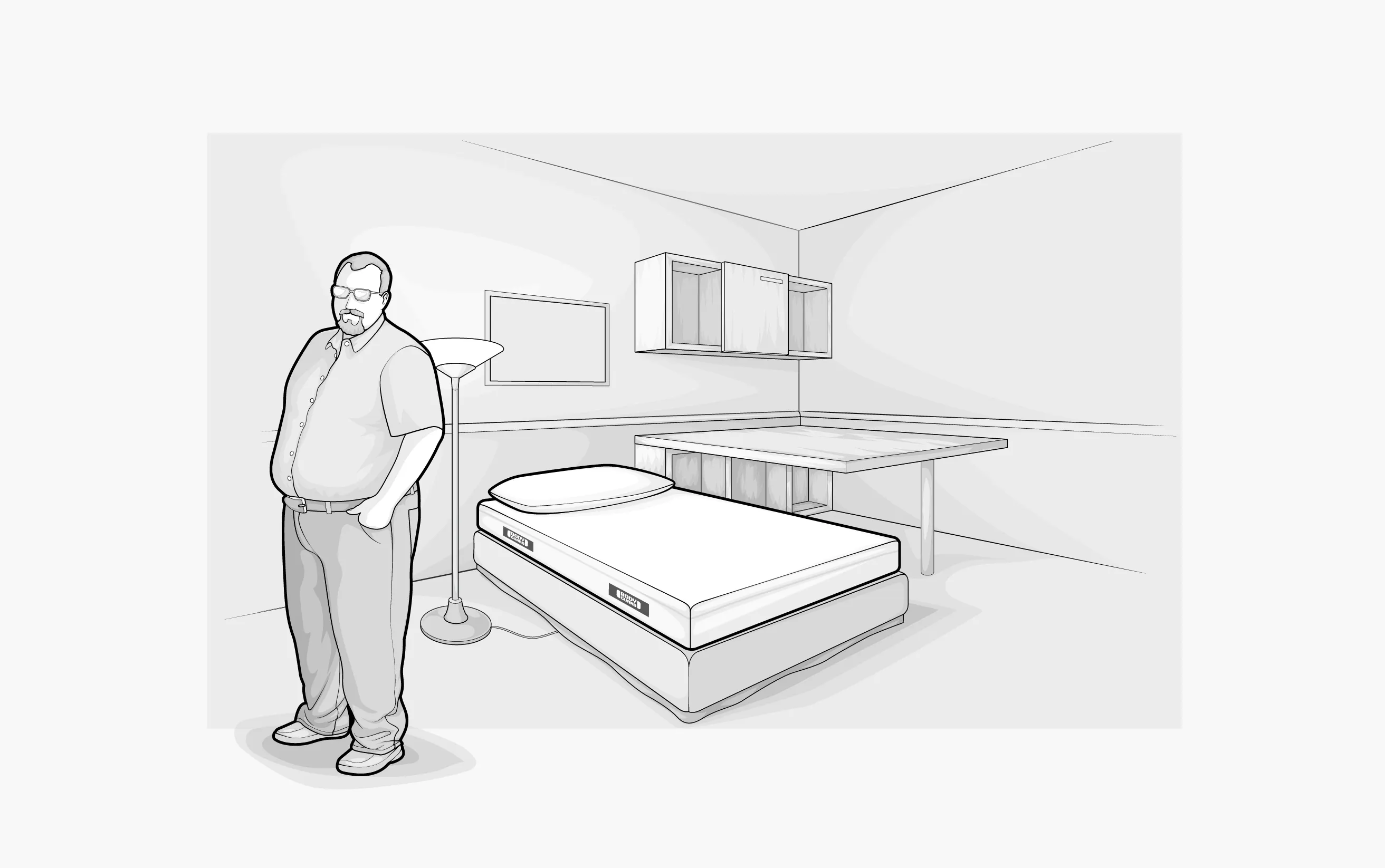

H, E, I or A – Which Type Are You?
Every individual is unique but for science, it makes sense to define different general body shapes. A distinction is made between four types, H, E, I and A, based on size, weight and physique. When buying a new mattress in particular, it is important to know your body shape so that you can find the optimal sleeping pad.
The HEIA Classification
The classification according to HEIA is based on the appearance of the letters describing the different body shapes. Thus the H type looks like a solid “H”, the E type is a big, strong “E”, the I type the slender “I” and the A type the “A”, which widens at the bottom.
THE H TYPE
- large, solid build
- shoulders, chest and stomach proportionately powerful
- narrow hips
- stomach more extensive than backside
➔ heavy, solid person

THE E TYPE
- tall, rather slender build
- shoulders wider than the hips
- backside and stomach not pronounced
➔ large, powerful person

THE I TYPE
- small to medium-sized, slender build
- hips and shoulders the same width
- backside and stomach not pronounced
➔ small, light person

THE A TYPE
- small to medium-sized build
- narrow shoulders and slim waist
- backside and thighs tend to be heavier
➔ small, curvy person

Do you tend to be more the H, E, I or A type? Do you recognise yourself? The vast majority of the population fits into one of the existing categories. In addition to the pure H, E, I or A types, there are so-called mixed forms, which have characteristics of several types. Body shape differs from person to person. Simply use the type that best approximates you to orient yourself. If you find you fall between two body shapes, it is best to choose a mattress that is suited to both types.

HEIA as a Reference Point When Buying a Mattress
The typology according to HEIA is especially important when buying a new mattress. Depending on the physique, certain conditions must be met if sleep is to be restful. For this reason alone, it makes sense to ask yourself which category you fall into. Small, light people – i.e. the I and the A type – hold the best cards when it comes to buying a mattress. They do not sink into the mattress surface as much while sleeping, and the mattress has an easier time fulfilling its support function. For large, heavy people, on the other hand, the mattress has to do more work. At night, the muscles relax and can no longer optimally fulfil their support function for the entire skeletal system (in particular for the spine). At this point the mattress comes into play and must provide adequate compensation for this. For this reason, a mismatched mattress can cause back pain and other discomfort. If a heavy person belonging to the H type lies on his or her side, for example, the mattress must compensate for the difference between the pelvis, waist and shoulders. Otherwise, it leads to a cramped lying position, which adversely affects the entire body. The same is true for an A type person with a wide pelvis. The differently shaped regions of the body are also pressed into the mattress to varying degrees. An adaptation is essential here. When one considers that a night’s sleep lasts on average seven hours per day, and thus that we spend about one third of our life in bed, it is possible to guess the extent of the impact that an insufficiently supportive mattress can have.
One Fits All
Many mattresses are suitable for small and light people, but not for large and heavy people. A good mattress should provide the best possible support for all HEIA types.
The BODYGUARD® Mattress optimally supports many body types, in both a back and a side position. So it comes as no surprise that the BODYGUARD® meanwhile has been bought more than four million times and therefore is Germany’s most beloved mattress.
The aim of the BODYGUARD® Mattress: good sleep for everyone
A High Degree of Resting Comfort Due to Ergonomic Modules and QXSchaum® Mattress Foam
The high resting comfort of the BODYGUARD® Mattress is achieved through various ergonomic modules which adapt best to the individual body zones. These are specially shaped and have different widths.
In addition, the specially developed QXSchaum® Mattress Foam is highly durable, which preserves the ergonomic properties of the mattress for years to come. The BODYGUARD® barely lost any height and retained its shape for an above-average length of time. Moisture, for example due to heavy sweating, and temperature effects from body temperature likewise did not affect the quality. In addition, thanks to its special dimensional stability and moisture resistance, the QXSchaum® Mattress Foam does not require a regeneration phase, unlike most conventional mattresses.
The combination of these properties ensures that the ergonomic properties of the BODYGUARD® Mattress are retained for years.
In a nutshell:
- The different body types can be described by the letters H, E, I and A
- Everyone is different: in addition to the pure H, E, I and A types, there are mixed shapes
- A personal assessment according to the HEIA principle is especially important when purchasing a mattress
- Which letter best reflects my physique and does the selected mattress optimally support that physique?

